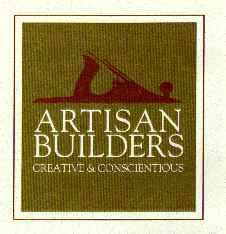It starts with a phone call, any time of day, sometimes on the weekend, even in the middle of the night. Listening is extremely important because an enormous amount of information is available beyond the dialogue. Speaking is equally important because at any moment, for any reason, the prospective client may decide to break off, declining your services.
Admittedly, for me, that first phone call of inquiry is an adrenaline rush of such addiction, fueling my determination to continue my business when a wiser man perhaps would have sooner opted for a different path. In those first seconds beyond recognition that this is a Prospect, the future gleams so brightly. Although it could be just a handyman repair, my impulse is to listen for the words that speak of a large, creative and rewarding project.
If it turns out otherwise, it is important to continue the call with just as much respect, integrity and humor as you would the Dream Client. For it can easily turn out that this foot used to hang a door may still walk through the opening. Numerous times, the conversation during the odd job has revealed that an addition is being contemplated. Or the neighbor, seeing the truck, invites you over to take a look at their house.
Of course, much depends on the source of the call and whether it comes randomly from the Yellow Pages or directly as a result of reputation and reference. Without bragging, a bond must be established, often as easy as recognizing the neighborhood. Perhaps our children have played against each other in soccer, or we love the same restaurant around the corner. Potentially, you are going to make a mess in their home, it helps to show them your humanity.
Once the conversation moves from introduction to detail, I have found a simple form helps to keep on track. For me, it covers the pertinent facts, gets me to the appointment on time, and provides space to write down notes and dimensions for the estimate later.
A long time ago, I had a tendency to rush to impress, obnoxiously eager to the point of thinking I could prove my expertise by finishing their sentences—and would often be wrong. Now I listen. They have been thinking, planning, articulating their ideas. I listen, ask a few questions when needed, and answer with reassurances their uncertainties or insecurities about the process.
Listen to their ideas.
Ask about their needs, their long-term plans to stay in the home. Have they experienced a renovation before? Survey carefully their clues to determine their commitment to the project. Often, I realize, my intuition can accurately read if the client is serious or just dreaming.
In addition to a specific date and time to meet—preferably not today (implied hunger), but within the week—it is important to leave them with a sense of excitement and anticipation of your visit. In the past, it was helpful to “assign” a simple task such as noticing their movement in the kitchen, or a date to the bookstore to look at design magazines.
Now, with web pages to boast, a portfolio brought to the initial meeting is unnecessary because they can see your work in the meantime, and imagine their own project online in the not-so-distant future.










